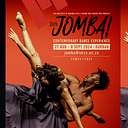“WOMEN HAVE BECOME FOOD TO BE EATEN AND DISPOSED OF”
An Interview with Jabu Siphika, By Genesis Cele
Jabu Siphika works with Flatfoot Dance Company as a senior dancer, teacher and choreographer. She facilitates community dance engagement projects in KwaMashu, Umlazi and in Waterloo. Over the past 5 years she has steadily been growing her choreographic voice as a serious South African dance maker with a deeply felt sense of women’s issues.
Q: The movement language of Ya Kutosha was set against the backdrop of the Gender-Based-Violence (GBV) pandemic in South Africa, as well as the struggles of confinement in the Covid era. Could you kindly take me through your creation process? What inspired you to create this work?
SIPHIKA: What inspired me to make the work is the high rate of GBV and femicide in South Africa. The non-stop killing of women and children. Women cry every day for this to stop but nothing happens. Justice is not achieved. I wanted to pick something that people could respond to because you wake up every day and hear that someone has been murdered by someone they love. Woman have become food to be eaten and disposed of, hence the use of a fridge. There is also a feeling of entrapment in the home especially during this Covid-19 era. Home is a cold place and sometimes suicide seems the only feasible escape (I’m not saying I condone it, but it is a reality for many women here in SA).
Q: What themes are embedded in your work?
SIPHIKA: Black women for generations have been told by other women who are close to them “kuyabekezelwa emshadweni.” which means you persevere in marriage. In other words, we have been programmed to stay in loveless, unhealthy, abusive marriages or relationships in the name of not embarrassing our families. This also speaks to the power of patriarchy. It is so deeply entrenched that women have become its’ gatekeepers.
Q: In the new Covid era, theatre makers are forced to engage with the digital space. What challenges did you face in creating the work relating specifically to working with a camera instead of performing live in front of an audience?
SIPHIKA: There are a lot of challenges when working with a camera, but I’ve learnt a lot. Navigating the camera movement can be quite challenging but I had help from Gabriel Masango who took some of the videos of me. The beauty of the digital space is its ability to reach wider audiences. Family and friends often can’t make it to my shows because of transport issues and work etc. Digital JOMBA! allowed for them to gather and experience the piece together, which has never happened before.
Q: What nuances did you find in film that are perhaps more effective and allow you to play more, than you would in a theatre space?
SIPHIKA: This was my first time working with the camera as I often choreograph for stage. Using a camera allowed me to show the audience every perspective and view of the performance. It allowed to further insert my intended meaning into the work and guide the audience’s eye to what I want them to see. Which isn’t possible, in the same way, in theatre. However, I will always love the theatre space and the energy that one experiences with a live audience.
